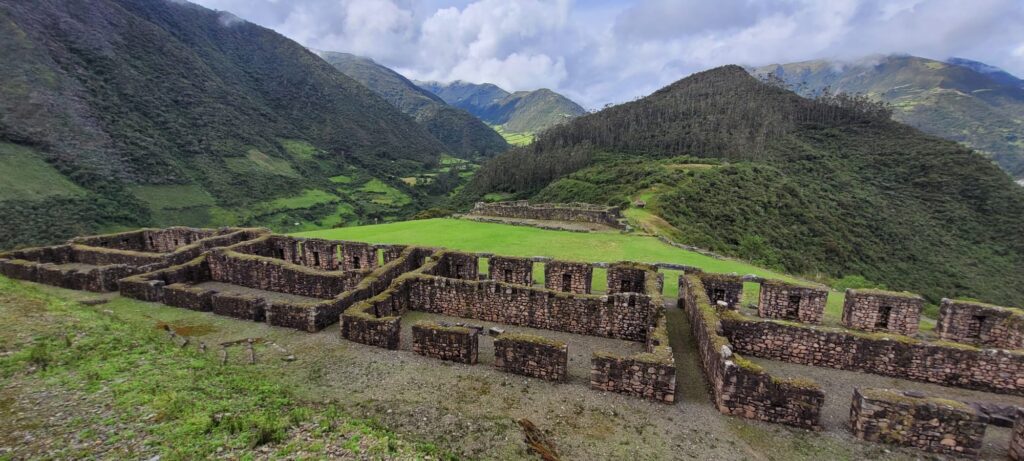Howdy parents
So, you have a newborn or a toddler and thinking about having your first traveling adventure together in a new set? Or maybe you already had your first time, and it was far from being dreamy, but still, you didn’t lose hope and want to do it with joy. Well, that’s possible. We gathered everything we learned while backpacking as individuals and applied it with some changes when backpacking with a baby, OUR BABY.
The fun doesn’t end after having your first baby. However, a different kind begins. In this post, we’ll tell you what we did to give our baby everything he needs while showing him the life we want for all of us together. You’re about to read our tips about traveling with a baby and a toddler because that’s what we know. Our baby became a toddler on the roads, and it was and still is a dream.
1. Don’t Overpack
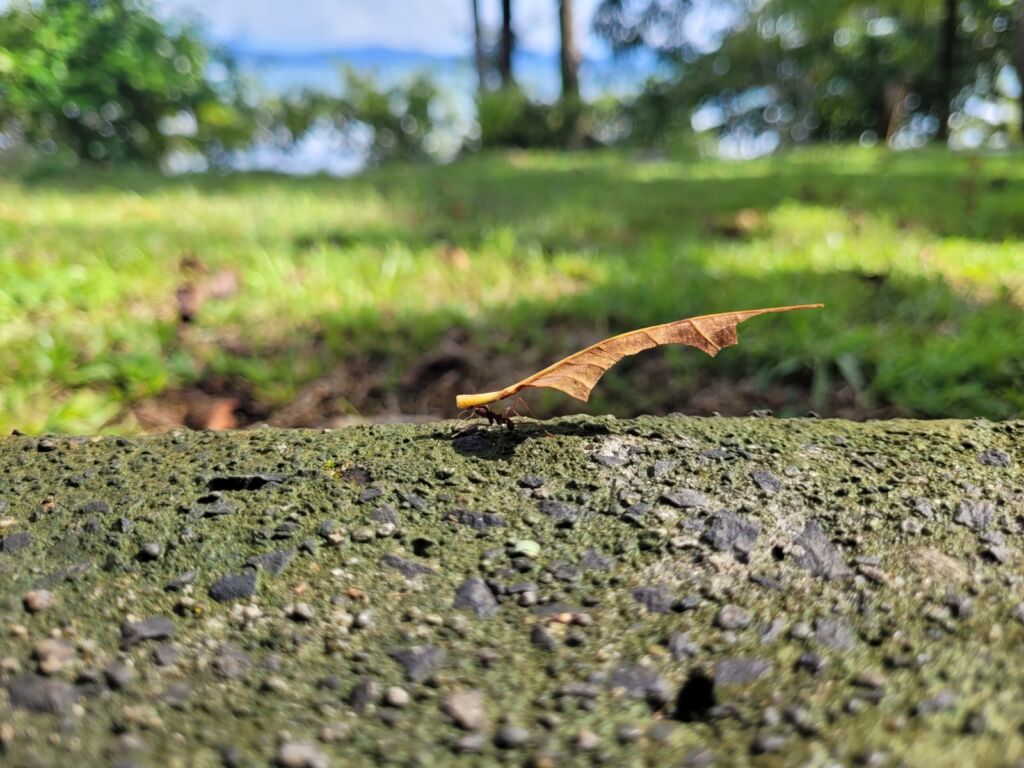
Pack in a way all your bags are with you, and you can still have a nice walk in the park. If you can’t imagine having a stroll and enjoying it, keep reading to check what you should leave at home.
If you’re a budget traveler and walk from the bus station to the hostel, or even if you’re on a short vacation and book taxies. You should always feel comfortable while carrying your travel backpacks. Meaning if you drop something, you have a spare hand to pick it up.
Our recommendation is to use two big backpacks, one for Papa and one for Mama. In addition, you should have another daypack that stays with you while you are on the roads. We’re always pro on reducing gear but find that a daypack between 28-35 liters is necessary. When backpacking with a baby, you need to make sure the essentials are close to you and not depend on the bus driver to pull over to get what you need.
We also recommend a comfortable stroller and will talk about it soon.
If backpacks are not your thing, try to stick with the same number of luggage– two big ones and one small.
Families tend to take everything the baby needs with them so their routine won’t get hurt. Fortunately, babies’ needs are basic. Meaning you don’t have to carry too much to make them happy. In addition, your baby’s routine will change during the trip anyway. It’s not such a bad thing. In our opinion, routine is vital for our baby, but so is breaking it from time to time.
2. Toys are Overrated
The world is a toy.
Have you ever noticed that the dining table is a playground or paid attention to each sand grain on the beach? Your baby or toddler for sure knows what I mean.
While we hike kilometers seeking waterfalls and wonders of nature, babies and toddlers are mesmerized by water spilling out of a bottle.
We forgot how to play with the world, but our babies are only starting to discover this magnificent playground. Regardless of travel, in my humble opinion, we shouldn’t distract them with plastic instruments and instead help them develop their limitless imagination.
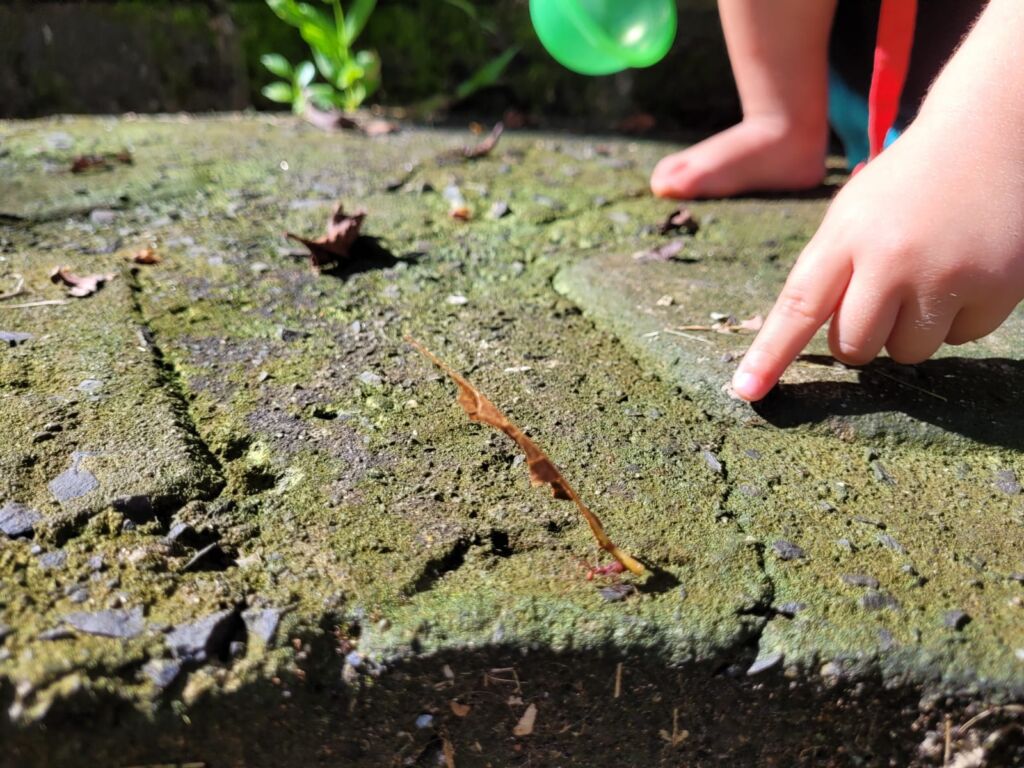
If you still find it hard to believe they don’t need toys for entertainment, carry with you one toy and take it out only when your child asks you to. Otherwise, let them show you what they want to play with and experience your child’s creativity and point of view. In addition, your bag will become lighter and lighter as you leave more toys behind.
When traveling with your baby, the exposure to a whole new world of play manifests itself to him/her and yourself. You’ll experience the world differently together with your baby and have new revelations when backpacking with a baby.
3. Baby Cot and other Alternatives
At the beginning of our travels, our baby turned one year old and started having excellent night sleep in his baby bed. We were afraid to hurt his night sleep quality and ours, too, so we chose accommodations that provide a baby cot.
It worked perfectly. We all had a good night’s sleep.
Still, looking only for accommodations with a baby cot prevented us from visiting more social guesthouses and hostels we missed from backpacking as singles. It was one of the things we wished to remain as part of the experience of backpacking with a baby.
Letting go of the need for a baby cot improved our travel experience
One day, we reached a remote village and expected our room to have a baby cot, but the host looked at our baby and pointed to the mattress on the floor.
It worked!
We just needed someone to take the step for us.
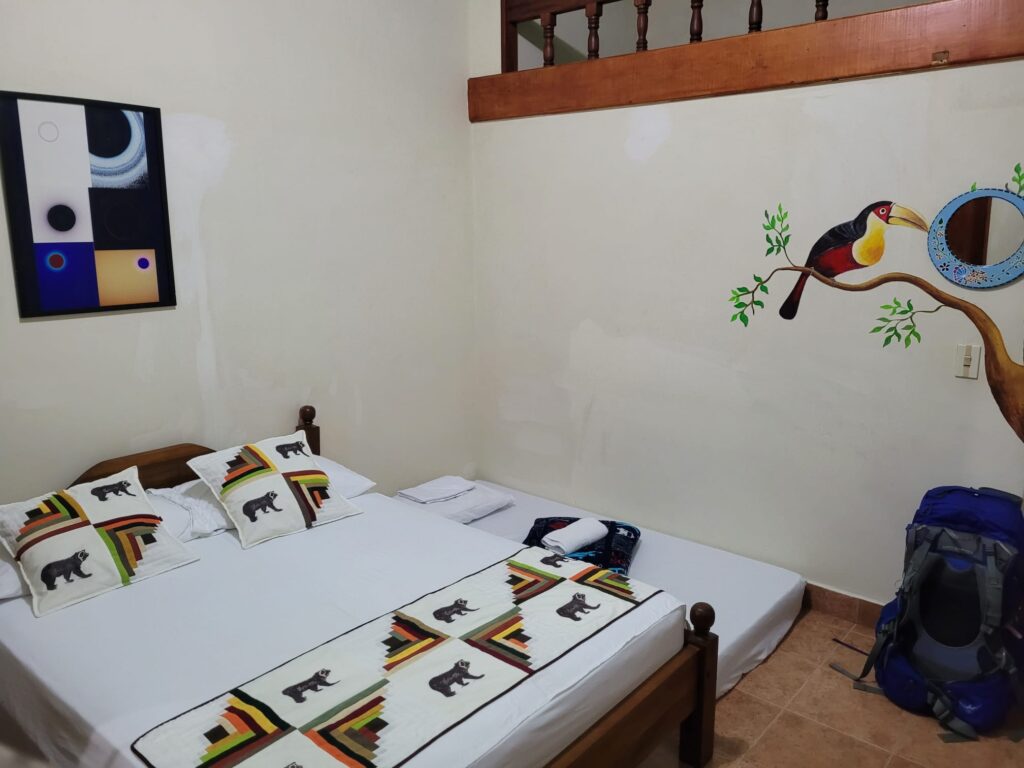
Make sure to block three faces of the mat with the walls and the parent’s bed, and secure the fourth face in the bottom with a blanket. Our baby never got to the blanket.
Another option that we heard many parents use is co-sleeping with your baby, and I guess that will be the easiest option because all you need is a double bed. It doesn’t work for us anymore, we did it till our baby turned six months, and after that, I found it hard to sleep with karate kicks to my face.
I still find it important to sleep in the same room, especially during a trip where the area is unfamiliar to the parent. Yet, I cherish the possibility of sleeping in a separate bed from my child.
Find what’s right for you.
Don’t forget that children are adaptive, and the only struggle is the one in our minds telling us it won’t work.
4. Pre-Book Tickets
When we backpacked solo, we loved traveling without a plan. Trying to mimic that concept when backpacking with a baby is brilliant in our eyes. However, it will help if you don’t push your spontaneity to the limit. Don’t get to the bus or train station expecting tickets to your desired destination will be waiting for you. The idea of it may blow up in your face. As a solo traveler, it’s a good story, but as a parent, it’s a greek tragedy.
If planning a trip in advance is not your cup of tea, at least make sure you know where you’ll spend the next night or two.
One day we showed up at the train station in Athens looking for a train to take us to Kalabaka, a town in Meteora, a well-known destination. No tickets were left, and it was the low season during covid times. We had to take a crappy accommodation near the dodgy train station and booked the train for the day after.
Eliminate Dramas When Backpacking With a Baby
Don’t assume anything about what’s not known to you. With a baby, arrive prepared at least one day in advance.
5. Ideas for Babies Snacks
During a long bus ride or a hike, when backpacking with a baby, snacks could keep your baby or toddler busy. Endless variety, from processed junk to organic products and everything in between, all awaits you. Slowly you’ll learn the amounts necessary for your child for a full day away from home.
Here you’ll find three suggestions for unique healthy snacks we take with us every time we hike.
Chia Energy Drink
“Chia” is the ancient Mayan word for “strength,” definitely something you would like to provide your baby.
Despite their tiny size, chia seeds are one of the most nutritious foods on the planet. One spoon of chia seeds is pumped with fiber, protein, omega-3 fatty acids, and various micronutrients.
Mix one spoon of chia seeds with a big cup of water in a jar. Let it soak for around an hour or till you see the texture change and the chia absorbs most of the liquids. Add some raisins or dates to the party for additional flavors.
Sandwiches with Tahini and Honey
Tahini is a sesame paste known to be a superfood because of its powerful antioxidants. Tahini contains more protein than milk and most nuts, and it’s also high in healthy fats and calcium. You can find it in most wholefood supermarkets and middle eastern shops.
If you’re struggling to find Tahini, peanut butter can act as a great substitute.
If you want to go the vegan way, you don’t need me to recommend the classic peanut butter and jelly sandwich. Just try to use homemade jam with less sugar.
It’s a sandwich with all food groups, easy to make, and easy to pack. In my eyes, this sandwich will never be overused or worn out, and still, it’s underrated.
Fruits
When our baby moved to solids, we ground his foods as everybody told us. And indeed, we did it for a month till it became a hassle and felt unnatural. In addition, I always knew we were facing great travels ahead, and packing a fruit grinder wasn’t something I was planning on doing when backpacking with a baby.
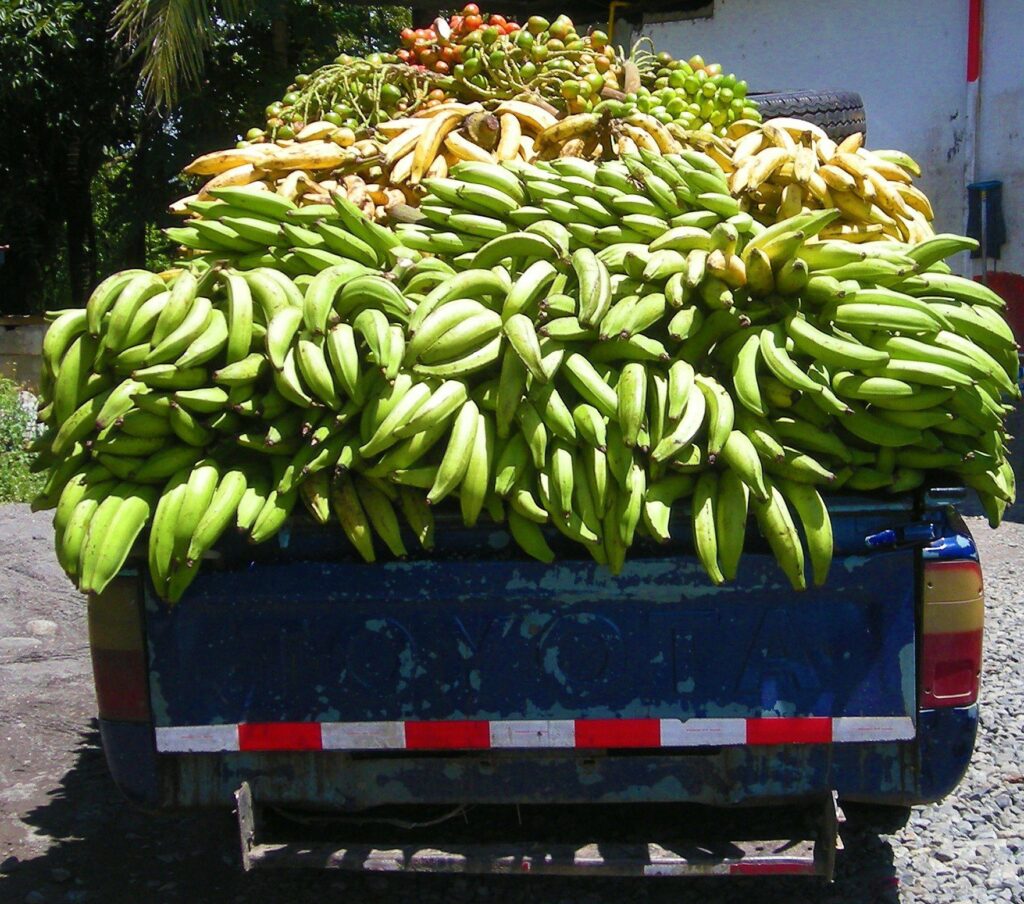
Follow the ‘Baby Led Weaning’ Approach
After a while, I discovered my laziness has a name: ‘Baby-Led Weaning.’
The baby-led weaning approach says the baby himself leads the feeding. This method relies on listening to the baby’s needs and responding accordingly.
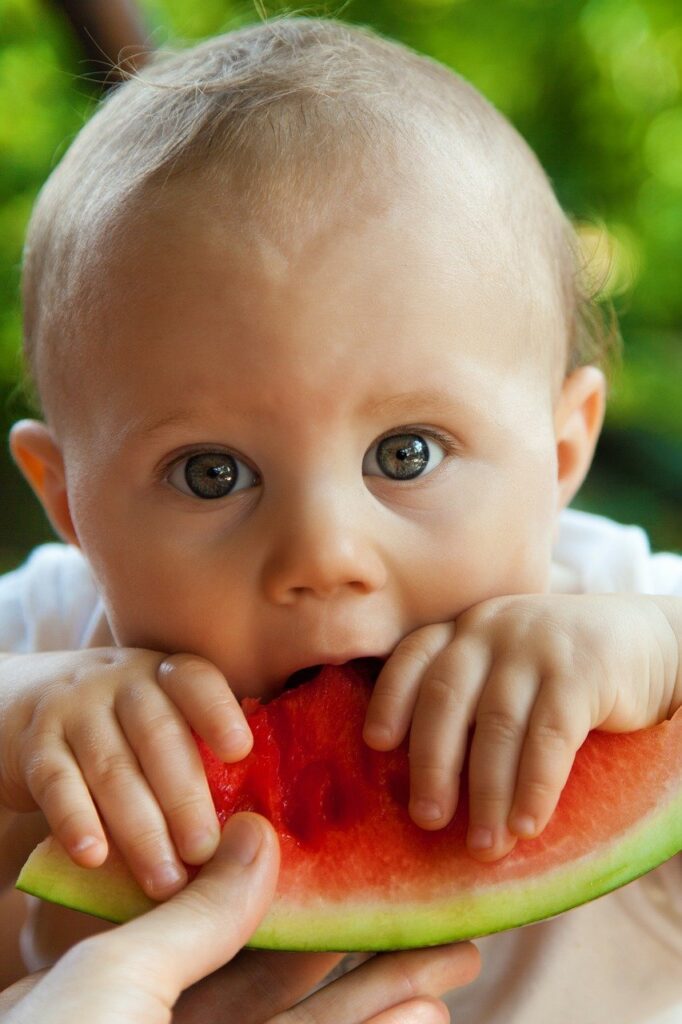
We started by giving our baby a whole banana, and after he grew his front teeth, we handed him an apple.
Whole fruit can occupy your baby for a while and allow them to lead their feeding.
I imagine some of you fear the possibility of suffocation (especially the
grandparents among us), but the approach highlights distinguishing between suffocation and a natural reflex. Stimulating the vagus nerve, which has extensions in the back palate, creates a reflex that sounds like a cough and looks like vomiting or discharge. It’s a necessary instinct.
If the child has ejected the food, it can take a few years out of your life, yet there is no need for stress. In any case, the baby should always eat while you’re beside him/her.
6. Diapers, Wipes, and Friendlier Alternatives
So what kind of a parent are you?
When going out for a stroll with your baby to the playground for one or two hours, are you taking five diapers with you? one? none?
There’s no correct answer, but do whatever makes you feel good. When it comes to backpacking with a baby, I have a few recommendations.
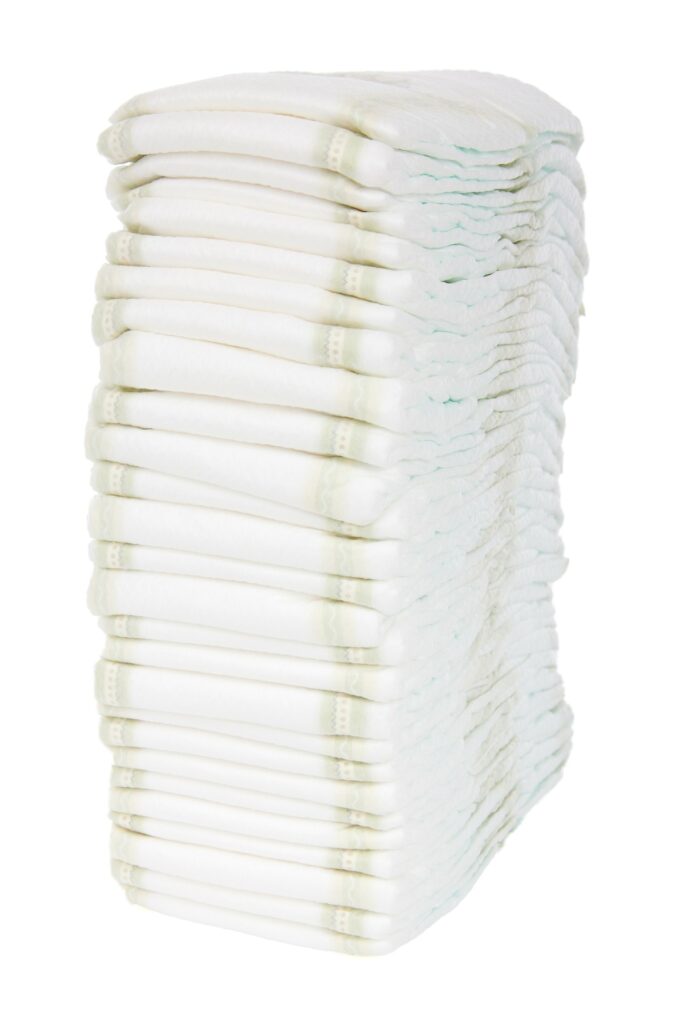
You know your child’s routine, and anyway, if you’re planning on traveling for a while, you’ll learn it. I suggest you don’t carry a big pack of 52 diapers or so. It’s too heavy and unnecessary, especially when backpacking with a baby. Try to stick to the small packages and use the local brands.
At first, we were skeptical about anything that is not Huggies or Pampers, but diaper technology has improved all over the world. In addition, the local brands are usually cheaper than the big known brands.
Eco-friendly diapers
Of course, using cloth diapers will be the friendliest option, even though it means you’ll have to work a bit harder on putting them in the washing machine twice and drying them. Unfortunately, we found it hard to always be near a washing machine because we have been traveling for a long time. In addition, cloth diapers can add extra weight to your backpack while you travel with your baby. For these reasons, we do carry a pair of cloth diapers with us but only use them when we stay at the same place for more than a few days. By that, we manage to reduce our use of disposable diapers and not make it an issue.
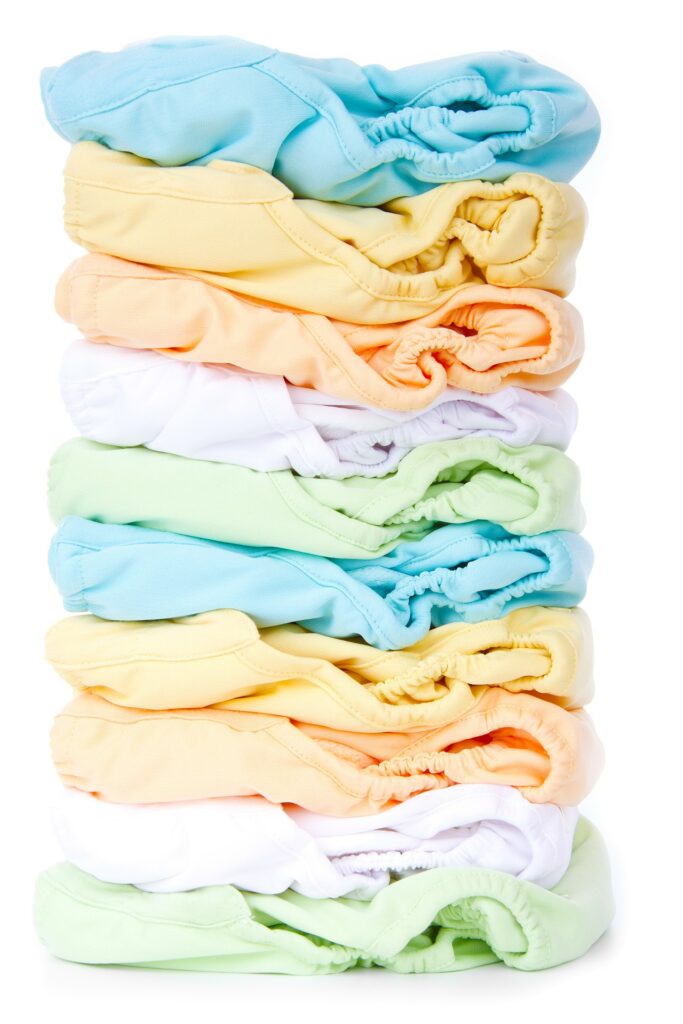
Our recommendation is to try your best to be friendly to the environment.
Those of you who find it hard to clean cloth diapers should try to reduce the use of disposable diapers. If you cant go all the way, don’t give up, do it halfway.
Baby Wipes Add Unnecesery Weight When Backpacking With a Baby
We stopped using baby wipes when our baby turned three months old because it gave him a rash. Instead of looking for the type that will suit him, we started washing his butt with water and natural baby soap after changing his diaper. Even on long roads, we don’t take wipes with us, instead, we carry a bottle of water and soap.
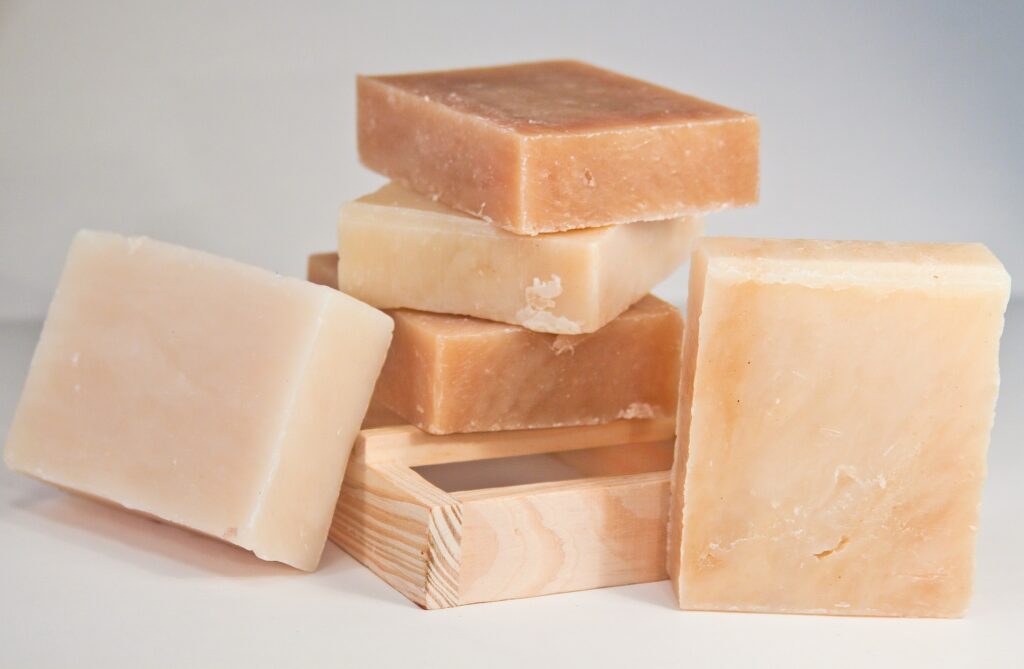
My recommendation is to avoid wipes. It’s terrible for the environment, it’s heavy, takes lots of space, and, to be honest, it feels dirty. If the Romans BC started using a bidet, why shouldn’t we do the same for our babies? Take this tip to yourself as well.
7. How Can We Prevent Carsickness to Our Babies?
If you have a baby who tends to have carsickness, road trips can be stressful. The first time our baby got sick was at the age of one year and a half, so we learned a lot about preventing and managing this challenging aspect of travel. Here is what you need to know.
What is carsickness?
Carsickness is a type of motion sickness. It occurs when the inner ear feels motion and the eyes do not see a movement. babies can sense the car’s motion, but their sight is often focused on what’s around them inside the vehicle. It sends conflicting messages to their brain, causing nausea.
If your baby gets sick on rides, here are a few tips that may help:
- Keep an eye out for early signs
Early signs of carsickness can include paleness, sweating, loss of appetite, fussiness, frequent yawning, or restlessness. You know your baby best, so if you notice your baby exhibiting behaviors that are not normal for them, it might be a good idea to pull over and take a break from driving. If you’re taking a bus and can’t stop, pay attention to your baby’s signs and prepare a sick bag. I know it sounds terrible, but usually, after they vomit, they feel much better.
After a while, you’ll be able to tell if your baby is prone to carsickness at any time or only on winding roads. Research your upcoming journey so you’ll know what to expect and try to stick to short rides at a time.
When we wish to reach a remote location, we try to ensure the ride won’t last more than three hours. If it does, we stop and have a night in a village somewhere on the way and move on the next day.
- Stop frequently
Stop as much as you can. After a break of 10 or 15 min, your baby may get oriented and recover.
If you’re using a bus, don’t be shy. Ask the driver if he’s willing to drive slower and stop often. If he doesn’t, do whatever you can to make your baby feel comfortable.
- Fresh airflow
Fresh airflow can help your baby to prevent nausea. Try opening a window or using air conditioning to blow cool air in him/her direction. And if you are using public transportation when backpacking with a baby, the first thing you should do is choose a seat with a working AC above or with a window beside you that you can open without asking someone to do it for you.
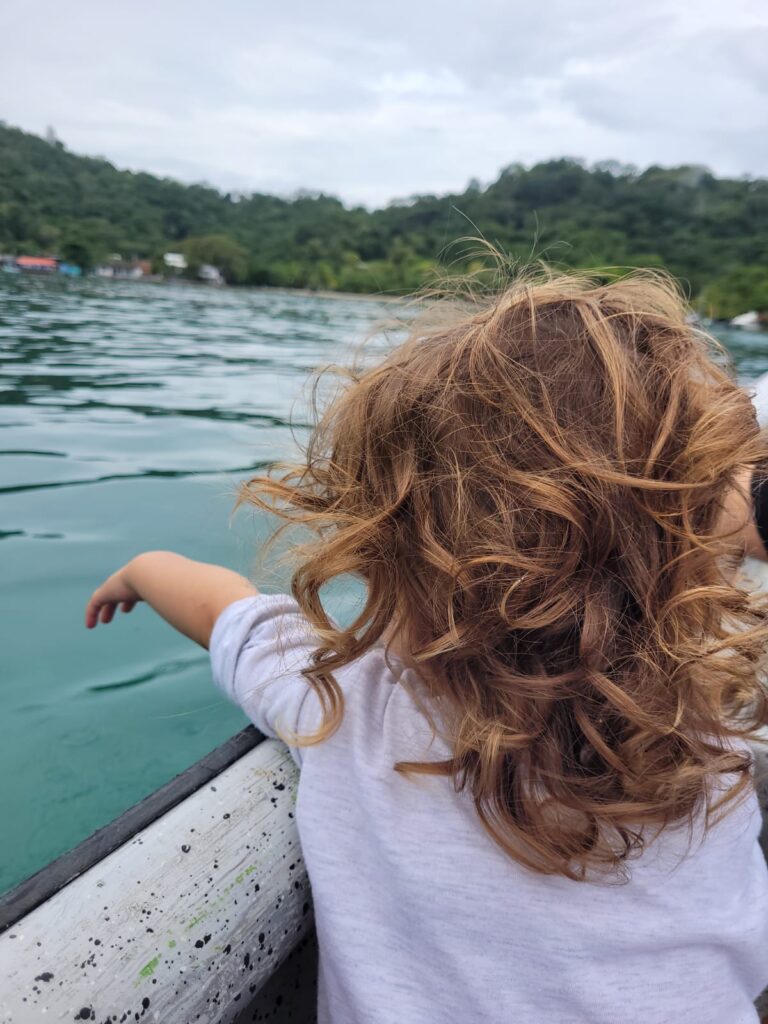
- To eat or not to eat?
Most parents I know try to avoid feeding their baby a few hours before the ride to prevent nausea. However, an empty stomach or hunger can make it worse.
Additionally, try to avoid feeding your baby with greasy food before the ride. I found that offering water-based oatmeal about an hour before the ride makes the baby feel full yet not heavy or stuffed.
- Use distractions
Some babies benefit from being distracted in the car. Try singing or chatting with your baby. Maybe if your baby starts speaking, a nice distraction will be pointing at objects you pass by during the ride. Focus on the object and mention it by name: a house, farm animal, trees, etc.
However, some say it may be best to avoid playing with toys and looking at books, as this can make symptoms worse.
See what’s best for your baby.
- Try scheduling the trip during nap time
Your child is much less likely to feel nauseous if he/she is sleeping. If you can plan a trip when you know your baby is a little more sleepy, this may decrease the chances of your baby feeling car sick. Furthermore, I have noticed that when nausea starts, babies become sleepy, use that to help them fall asleep. If you use a sleeping object, a pacifier, or any other magic tricks, use them when the time comes.
After a while, you’ll know exactly when.
Final thoughts about carsickness when backpacking with a baby
All that’s written above are things that helped us to deal with carsickness and our personal experience. We hope you’ll find it helpful as carsickness can sometimes be the most challenging part involving backpacking with a baby. At least for us.
But I promise you’ll feel like ninjas at the end of the day for not giving up on the opportunity to explore the world that awaits you.
8. Our Choice of the Best Baby Stroller for Travelers
After having a baby, it was vital for me to know that my independence was not gone. Meaning I could have long days out of home with my baby without a struggle and that I’m not doomed to have only park strolls. Even though my level of mobility has changed, it’s not gone. Indeed it’s possible to achieve this kind of mobility with the right baby products. Remember, not too many, but the right ones.
The Right Baby Stroller Can Reduce Weight and Stress When Backpacking With a Baby. For us it’s the Babyzen YOYO.
A light, safe, and resistant stroller is a must while backpacking with a baby. Well, as long as it is not a burden, after all, it’s here to make our life easier.
When I was five months pregnant, I was planning our first trip as a family to Paris, and that’s when I decided which stroller I wanted. YOYO. All I needed to know was that I could take it with me on the plane like a cabin bag. And indeed, Yoyo, with its newborn pack, is foldable to cabin baggage dimensions. Because it had this privilege, I imagined the Yoyo stroller would have more characteristics I would find helpful.
Babyzen YOYO is light and easy to operate
In addition, it’s one of the lightest strollers in the market, weighing 6.2 kg and usable from birth. Yoyo can protect your child up to a weight of 22 kg.
Because it’s so light, the Yoyo stroller is designed in such a way that you can carry it on the shoulder with its padded shoulder strap. Perfect to use while you hop on a bus with your baby or any other public transportation. For me, it’s an essential skill when backpacking with a baby.
Furthermore, it folds and unfolds in a moment, which is incredibly useful when you’re in a hurry. Finally, it’s not a two peoples mission to fold it. On the contrary, you could do it yourself with one hand.
There’s one disadvantage, in places with cobblestones sidewalks, it’s not easy to make it run due to its small wheels. But it wasn’t that of a problem for us thanks to its weight, and we could handle it by folding and carrying it on our shoulders like a bag.
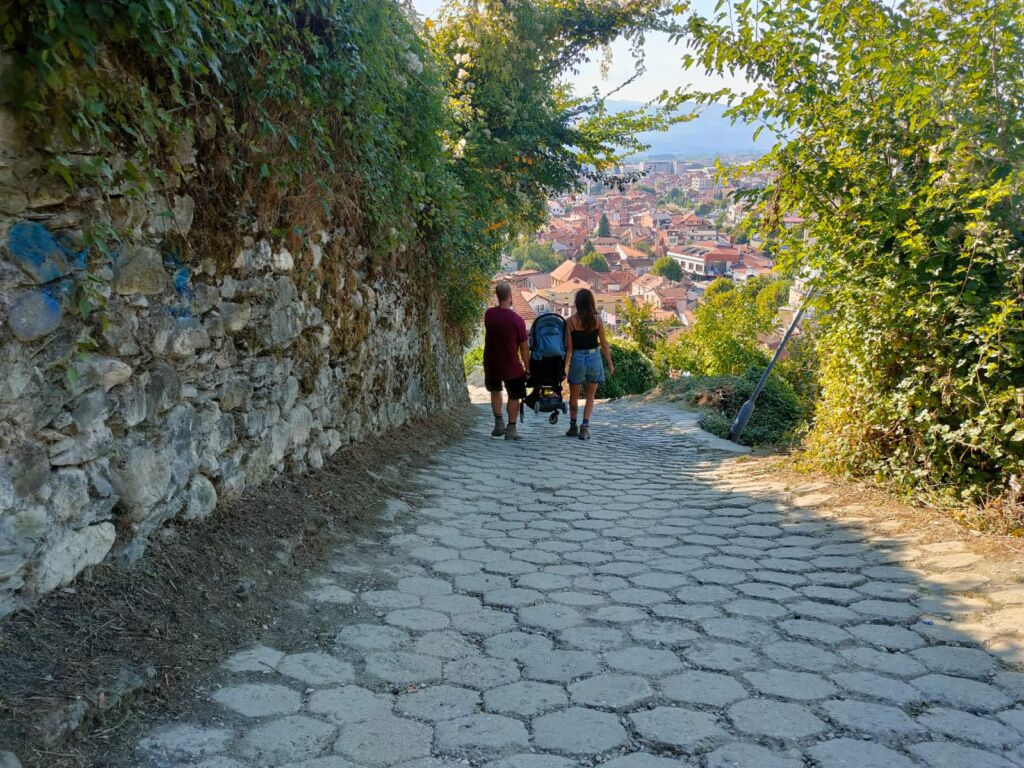
The stroller has a slim body, making it easy to move on narrow sidewalks and between parking vehicles. I consider it an essential characteristic if you live in a city or plan backpacking with a baby.
What is the perfect age to use a stroller when backpacking with a baby?
Our travels with Pardes started when he turned one year old and never really stopped since. Now it’s not like we use our Babyzen YOYO stroller all the time when we are on the road, but it is there for us, folded smaller than a daypack. It’s extremely useful in exhausting moments when we get off the bus and walk to the guest house with all our bags. Or during relaxing strolls around villages when all we want is a break from carrying weight on our backs (a backpack or our baby).
Having said that, we noticed that after Pardes turned two years old, the stroller got neglected. He started walking and running, which gave him a sense of independence, and we wanted to encourage it.
Just a heads up, walking at your child’s pace can slow down your Slow Travel. But in our case, it’s a price we were happy to pay.
So if you’re facing a backpacking journey with a 2 years old child or older, we will not recommend carrying a stroller. On the other hand, if you’re planning a week of vacation, take a stroller with you; it may be too short to change your habits.
This brings me to our next exciting suggestion while backpacking with a baby. Traveling with a kids’ scooter. It is suitable for children above 3 years old, folds compactly, super light, and can be attached to your backpack.
I know it’s obvious, but make sure to use it in pedestrian areas. We started using a scooter during our travels in Peru, at the sacred valley. Where most towns and villages are small and safe, with just a few or absolutely no cars in them.
9. Baby Carrier is a Must When Backpacking With a Baby
The only thing I knew I wanted before giving birth was a baby sling! And indeed, using it exceeded my expectations. I used it every day for hours, for shopping, out for coffee, and hiking. It felt safe and secure. My baby immediately fell asleep there, and if you’re nursing, you can do it while your hands are free. Well, some see it as a virtue.
When your baby will turn six months old, you may start to feel the need for additional back and shoulders support. For us, it was the time to switch to a baby carrier. I think you should never save money when it comes to your body’s health, while anyway, your baby will feel comfortable close to you no matter what.
Choose the Right Brand That Will Suit Your Body
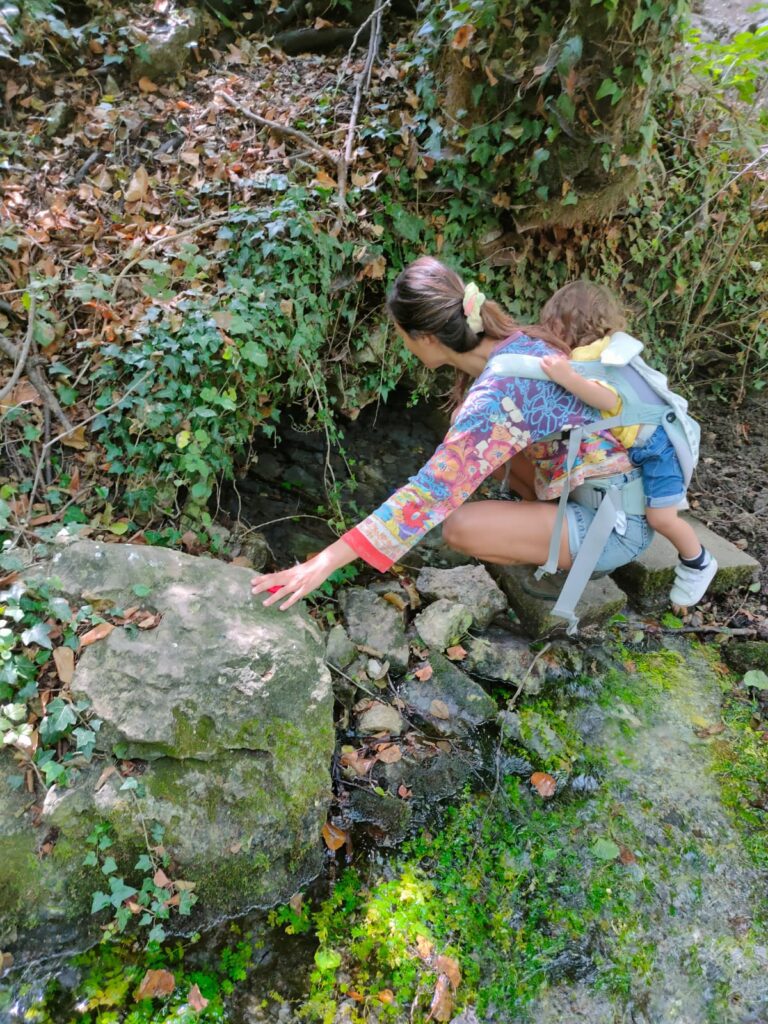
The first brand we tried was Baby Bjorn. It was perfect for Yochai and fairly well for me, the problem was, that it caused some pain in my lower back. Remember that the baby carrier market is not a monopoly. There are more than a couple of excellent brands – not just one. Therefore you should find the time to try them all and choose the one most comfortable for you.
Eventually, I discovered that Ergobaby was the best carrier for me. Our baby is already two years old, and we’re still using it. We use it while hiking and for extended stays away from our accommodation during our baby’s nap.
ErgoBaby was there for us during challenging and long hikes in Huaraz, Peru. And didn’t fail us once.
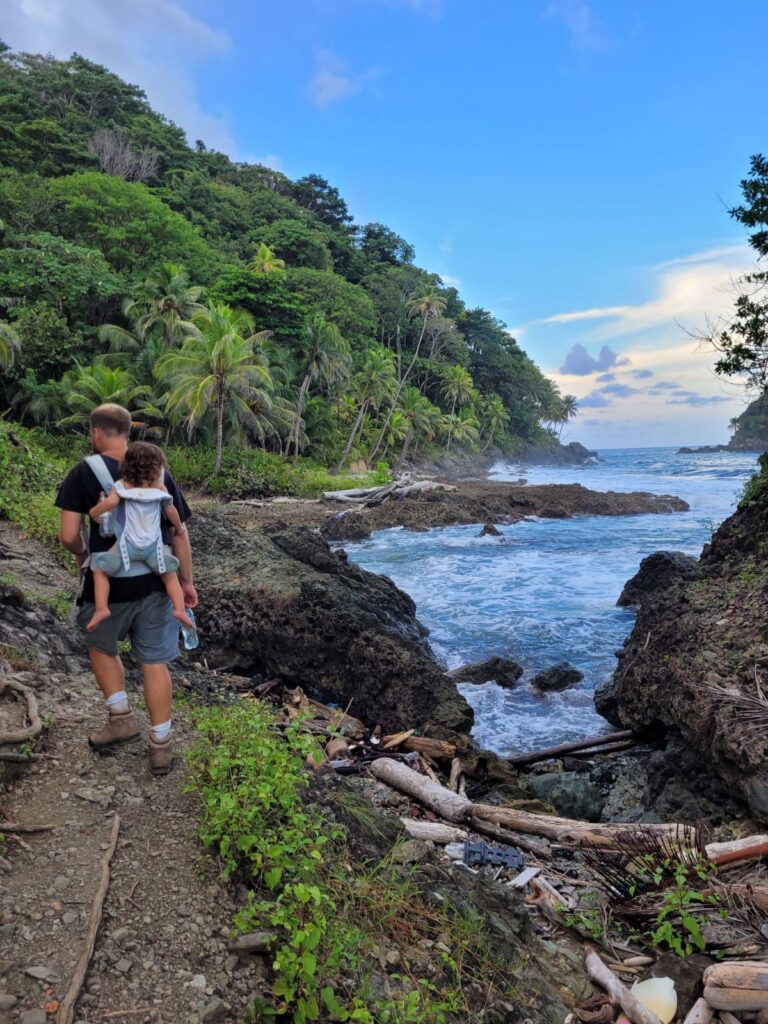
I will tell you a bit about why I love Ergobaby
COMFORT FOR YOUR BABY
While in many baby carriers, babies are held dangling by the groin, the ergonomics of Ergobaby support the natural posture of babies-which is sitting with hips spread apart. And indeed, this is the best position for healthy hip development agreed by the International Hip Dysplasia Institute (IHDI).
COMFORT FOR YOURSELF
The ergonomic design of the Ergobaby carrier puts your baby’s weight on your hips instead of your back. If you are into hiking, you surely know that the technology of the best backpacks in the world aims to put most of the weight on your hips to reduce the pressure from your back.
Furthermore, the design of Ergobaby doesn’t limit the mobility of your body’s lower half. It’s possible to stand, walk, sit down and hike for a long distance.
Ergobaby ergonomics can support you and your baby till they turn four years old.
Knowing that as parents, we don’t have to neglect our greatest passion for walking around in nature was comforting. Even nowadays, when our baby can walk long distances, we still use the Ergobaby for challenging hikes.
Ergobaby’s unique design
One day, we felt like our baby was not held well in the carrier. We began to research the Ergobaby carrier to understand what we could do to feel more comfortable. Finally, we realized that Ergobaby’s design is flexible and easily changed with specific buttons. You can modify the carrier size with your child’s growth or modify it for different postures of your baby.
It was a game-changer for us.
We became fans of Ergobaby and decided to write about it.
What we didn’t like about Ergobaby
Not every product is perfect it to be honest and it was not easy to find cons about Ergobaby. And yet we found a few things to improve in our favorite baby carrier. It’s important for us to give you the whole picture about Ergobaby, so you can make the smartest decision.
- Because Ergobaby is so supportive, it is not petit and can take a lot of space in your backpack. Therefore most of the time, we tie it to our backpack from the outside.
- It can get hot when using the carrier. Still, with time and after using a few other baby carriers, we realized that the problem was with our sweaty baby and not with the fabric of the Ergobaby carrier.
- Ergobaby is not cheap, but as we said before, comfort for yourself and your baby is not something you should save on.
Final Thoughts
When leaving for traveling that involves hiking we recommend taking a baby carrier you have used before and that your body knows. Also, if you know your baby doesn’t always feel at ease in new places, a baby carrier can keep them close to you. That way, your baby gains confidence and uses it to walk freely away from you. In small steps, of course;)
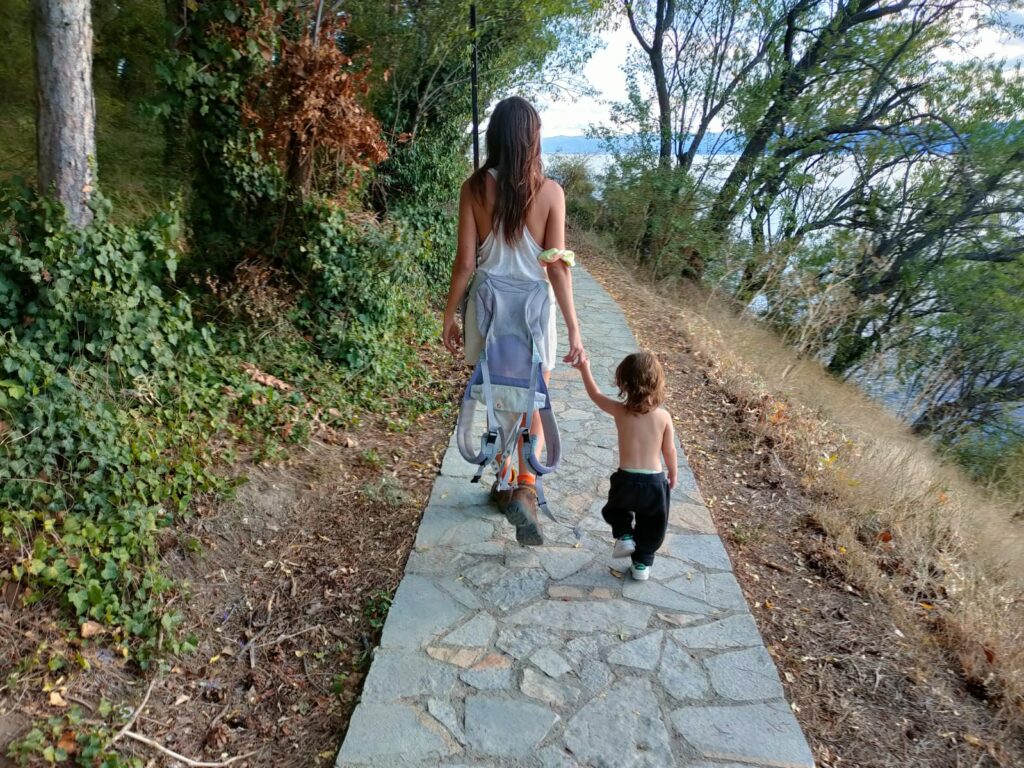
10. Slow Travel
When traveling with our baby, we like to spend a minimum of 3 or 4 nights in the same place. We realized that we don’t do too well on a busy schedule, and this was one of the significant changes of traveling with a baby.
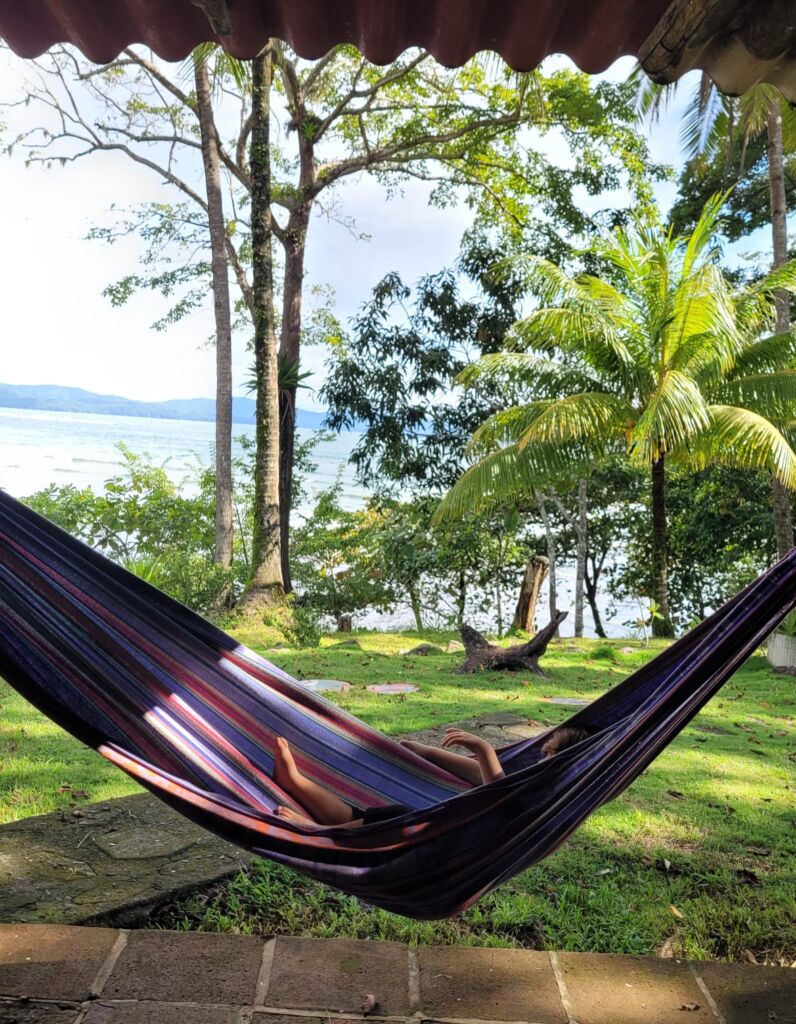
Slow traveling.
Our Examples of Slow Travel When Backpacking with a Baby
We try to limit our sightseeing to one or two venues a day. One before and one after our baby’s noon nap. At the same time, we leave enough time for playing in the room, relaxing, playgrounds, and other travel necessities like shopping and eating.
When arriving at a location known for its hiking trails, we try to make the day as calm as possible.
Try not to hurry. Make sure everyone had breakfast, including yourself. We realized as parents that it’s crucial to find relaxation because the baby feels your energy and senses discomfort at your stress. Make sure all your baby’s physical needs are fulfilled, and they will enjoy your joy.
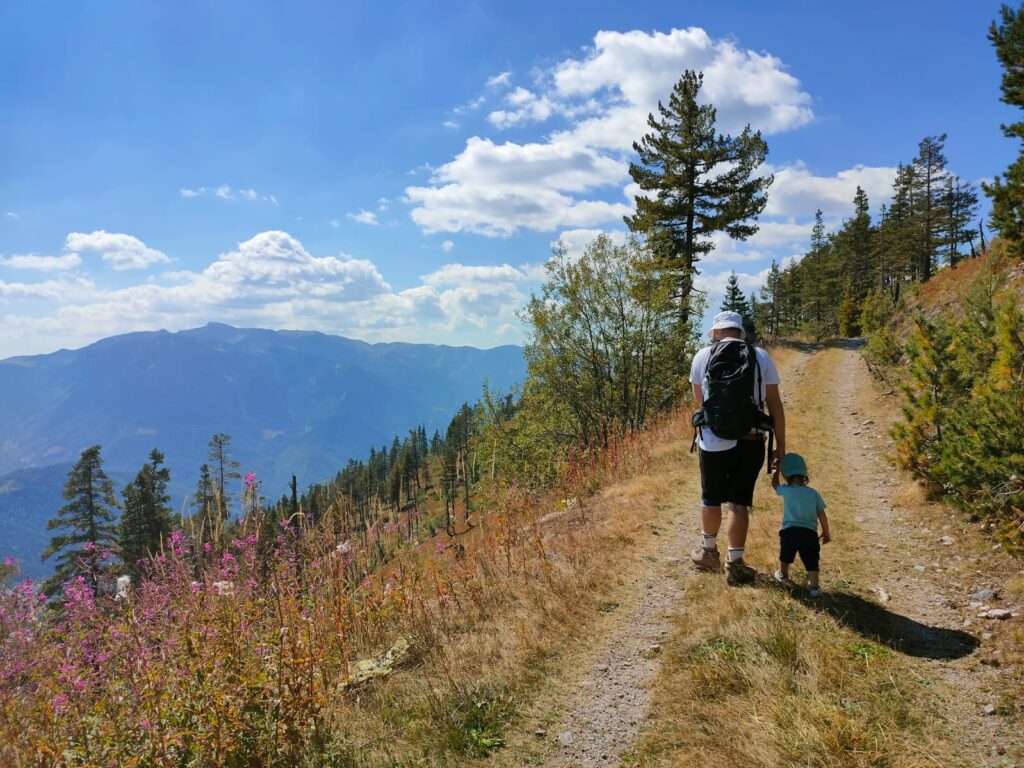
Some parents hurry to get back home quickly after a full hiking day, and I can understand why, as it can be a bit stressful to spend all day outside with your baby. We offer a different approach. Use a suitable baby carrier that you are used to, and pack enough food and snacks. Your baby will sleep well on the carrier and will have memories from his days in the womb while feeling your heartbeats.
When traveling slow, you can stay in remote destinations, have one day of hiking and another of relaxing and exploring the area of your new home base.
The purpose of your vacation is to return home recharged and not depleted
Being synchronized with your child is not a fairytale, and it can indeed be your reality. If you sing with the birds, your child will sing too. If you take a deep breath after a steep climb, they will as well.
All you have to do is move slower than you used to. Some of us are afraid to take these steps away from home. Do it deliberately, and gradually leave more belongings behind. When you start feeling lighter, it will be easier to get out of your comfort zone until everywhere in the world is comfortable.
Slow travel prevents the need for a vacation after the vacation.
It’s possible also in one week of traveling and not only in six months.
Slow travel is our great discovery of backpacking with a baby, and it deepens the experience of our journeys and revelations in the world.



